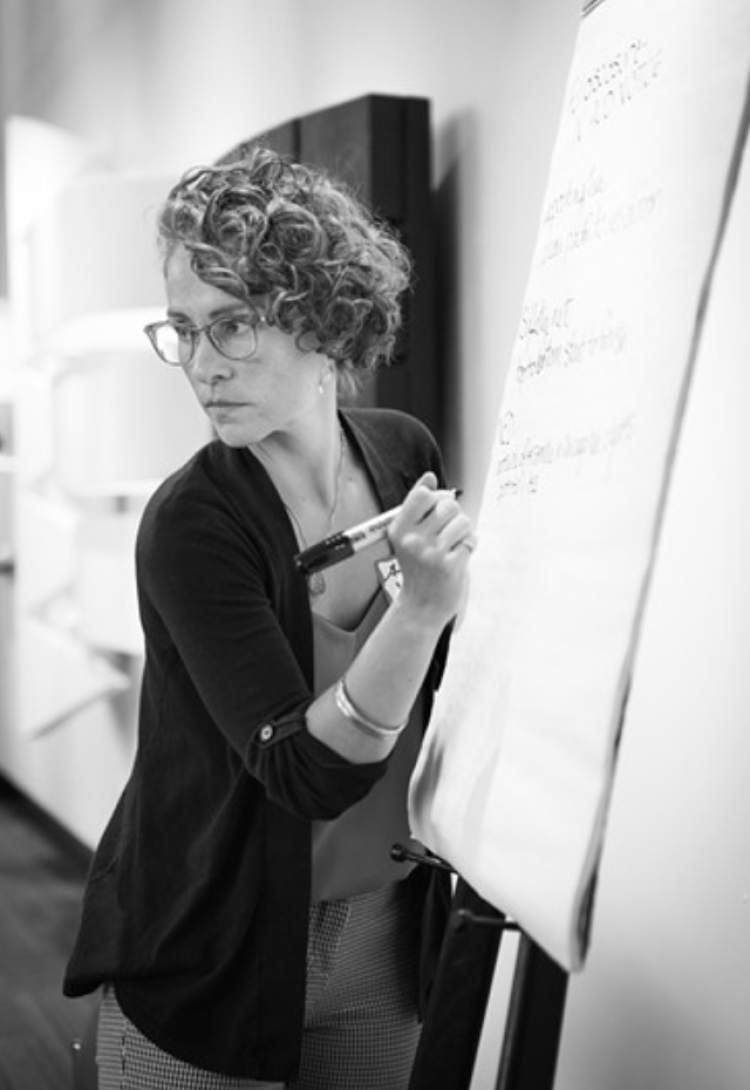Now showing: New guidelines to ensure safety of theater performers
As #MeToo changed the way Hollywood addressed issues of sexual harassment, safety and inclusivity, two CU Boulder faculty members wanted to make sure the movement’s positive changes could help artists closer to home, too.
They embarked on a mission to create a standardized set of best practices to foster safe places for the next generation of performance artists.
After two years of research and collaboration with artists across the West, the Colorado Theatre Standards (CTS) are now a reality. The CTS detail guidelines for dealing with conflicts, reporting sexual harassment, handling violence and stage intimacy and maintaining basic health and safety for all artists.
If you or a friend have experienced sexual assault, the Office of Victim Assistance (OVA) can provide free and confidential support.
Additional resources can be found at the the Office of Institutional Equity and Compliance.
“Our hope was to create a foundation upon which people could be supported in dealing with these issues, and to change the language of our industry so that people have a productive way to respond to issues,” said Amanda Rose Villarreal, a graduate part-time instructor and PhD student in the Department of Theater and Dance.
Villarreal, who’s research focuses on intimacy in immersive performance and live action role play, is one of the three co-founders of the Rocky Mountain Artists' Safety Alliance, a steering group responsible for developing the Colorado Theatre Standards.
She believes performing arts culture has set a bad precedent.
“In acting, and in many forms of performance, we’re taught that if we want to be successful, we have to be easy to work with, and that often means not standing up for yourself,” Villarreal said.
While the #MeToo movement put a lot of focus on Hollywood, Villareal says similar issues are widespread in the performing arts.
“We psychologically protect ourselves from believing that this happens here, that it happens in our own community,” said Villareal.
Building a coalition
Villarreal met Tamara Meneghini, an associate professor in the Department of Theater and Dance, while writing about a previous performance on interpersonal violence on college campuses.
She knew she had found a fierce ally who could help make a difference.
“After our meeting, we found we were both really invested in teaching our students to self-advocate for safety,” Villarreal said.
Meneghini — who has worked in the theater industry as a professional actress, director and acting teacher — had her own experiences with feeling silenced when something felt wrong on the job.
“I firmly believe you have to trust your body,” she said. “Whatever is happening to your body, that’s truth, and we don’t always know how to respond to it with our words or actions.”
When Meneghini heard that her students had similar experiences to her own, she wanted to leave the industry better than she came into it.
She was inspired by the policies her peers implemented at the Not in Our House organization in Chicago. They established the Chicago Theatre Standards before the height #MeToo movement.

Amanda Rose Villarreal taking notes at Not in Our House. Photo by Rick Villarreal
Meneghini and Villarreal held community discussions for more than a year, mulling over the specifics of the Chicago standards.
They recognized that Colorado’s theater community had a distinct culture. They had to make their own standards.
“Following Chicago’s lead, we were able to create our own set of standards specific to our region and our unique theater community,” Meneghini said.
The standards
The Colorado Theatre Standards don’t just address sexual harassment, they cover a wide range of issues that may arise during auditions, rehearsals and performances, and the standards give theater companies strategies to help mitigate those problems when they come up.
For example, the Conflict Resolution Path (CRP), a documented pathway to address friction, encourages safe communication among artists.
The standards also call for a nonequity deputy or “NED,” a member of the company chosen to be responsible for fielding issues that arise among the stage manager, the company and the director.
“The standards allow people to know when something isn’t right. They detail how people can communicate their feelings, and they give people something to stand on,” Meneghini said.
The evolving document also outlines procedures to deal with racial issues, a component added after Meneghini watched the George Floyd protests unfold.
“Watching the power of the young people protesting this summer and standing up for dignity, justice and the value of viewing everybody equally, made me realize that this is the time for people to speak up,” she said.
The document encourages people to create social justice change within the broader context of the history of performance, which in the United States has been dominated by white artists, directors, writers and stage and film production crews.
Building community
The Rocky Mountain Artists’ Safety Alliance is focused on disseminating the document and gathering new perspectives.
“We’ve had companies from New Mexico all the way to Washington state using the standards and sending us feedback,” Villarreal said. “We’re constantly making adjustments and sending out new versions.”
So far, they’ve sent the document to 37 theater companies and six universities.
While they anticipate hurdles, such as companies wanting more control over their internal culture, Villareal is hopeful industry leaders will see the effort as a new way to collaborate toward better art.
“For so long in the performance industries, people have been doing what’s been handed down to them from the generation before,” she said. “But when people know better, people can do better.”
For Meneghini, the end goal is simple: a better community where artists can thrive.
“It’s not even really about the document. It’s about continuing to build a community that’s mindful of each other and seeks justice and equality, even when making art,” she said.


